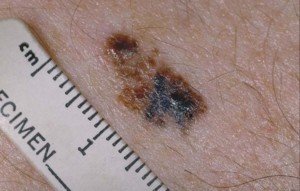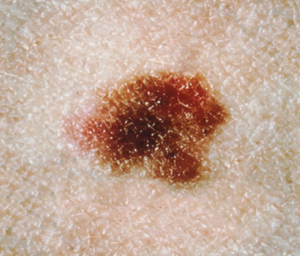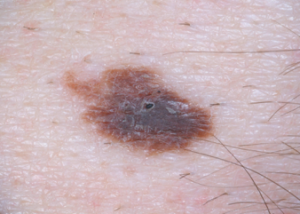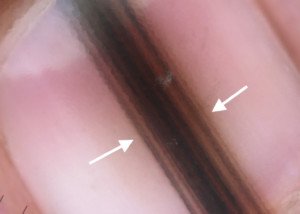It’s pretty scary to know that a perfectly normal mole can look like a melanoma, and even more unnerving is that a melanoma may pass as a benign mole.
“A normal mole can look like a melanoma, and it takes a well-trained dermatologist to understand the subtle differences,” begins Zain Husain, MD, FAAD, board certified dermatologist and fellowship-trained Mohs micrographic surgeon with New Jersey Dermatology & Aesthetics Center.
“When we evaluate a mole, there are numerous features we assess, including the degree of asymmetry, border irregularity, color variations, diameter of lesion and recent changes in the mole,” continues Dr. Husain.
“Moles can have irregularities in these features and still be benign.”
Why might a normal mole resemble a melanoma?
Most images of melanoma, whether online, in pamphlets or in print magazines, show lesions that appear to be well-underway in their progression, often with a charred appearance, patches of black, globules, nodules, crusting and/or blatant asymmetry.

Melanoma
But early melanoma can look like a benign mole. Hence, a benign mole can sometimes pass as a melanoma.
However, as already pointed out, sometimes a normal mole doesn’t rigidly obey the rules for what a harmless mole should look like.
For example:
• Some benign moles aren’t symmetrical
• Some benign moles have more than one color
• Some normal moles look “bad.”
Skin Lesions Should Be Examined Under Magnification
“We often use a tool called a dermatoscope which magnifies the lesion and allows us to better visualize pigment networks, patterns and other microscopic features to determine if the mole is suspicious for melanoma,” says Dr. Husain.
“If we are concerned, we perform a skin biopsy to be evaluated by a dermatopathologist to determine diagnosis.”
Funny Looking Big Moles that Can Pass for Melanoma

This mole sure looks like a melanoma. There’s at least five colors; it’s asymmetrical; and the surface looks variegated. But it’s only an atypical mole.
Dr. Husain continues, “There are moles called dysplastic nevi, or atypical moles, which contain abnormal cells but are not melanoma.
“These moles are often graded as mild, moderate or severe atypia, or level of abnormality.
“As some melanomas arise from these atypical moles, it’s important to surgically remove severely atypical moles to prevent possible progression to melanoma.”
Melanoma can also arise from a previously perfectly normal or typical mole.
It’s just that with an atypical or precancerous mole, a transformation to malignancy is more likely when compared to the likelihood of this happening in a normal nevus.
Furthermore, many dysplastic nevi are at least the size of a pencil eraser in diameter, and this size of at least 6 mm is reason to be on high alert for malignant transformation.
In fact, some dermatologists will advise that a normal looking mole of at least 6 mm be removed as a precaution.
Any lesion that you ever have removed, no matter how benign it appears, and even if the removal is for only cosmetic purposes, should be biopsied!
“I advise patients to get annual full body skin examinations by their board certified dermatologists to catch potential dysplastic moles and melanoma early,” says Dr. Husain.
“Performing monthly self-skin examinations in the mirror or by a partner can be helpful in detecting any new or changing moles and by using the ABCDE’s of melanoma (asymmetry, border irregularity, color variation, diameter >6 mm and evolution).”
Because a normal mole CAN transform into a malignancy, you should get to know what every one of your moles is supposed to look like.
Take good hard looks at them every time you do a self-skin exam. And also inspect non-nevus areas of your skin.
For people with too many moles to keep a memory track of, and especially those who have a lot of dysplastic nevi, it’s highly recommended you undergo annual serial digital dermascopy.
 Dr. Husain has extensive training in advanced skin cancer surgery and reconstruction as well as cosmetic procedures including injectables, body contouring and laser surgery. He delivers lectures on dermatologic topics at national conferences.
Dr. Husain has extensive training in advanced skin cancer surgery and reconstruction as well as cosmetic procedures including injectables, body contouring and laser surgery. He delivers lectures on dermatologic topics at national conferences.
 Lorra Garrick has been covering medical, fitness and cybersecurity topics for many years, having written thousands of articles for print magazines and websites, including as a ghostwriter. She’s also a former ACE-certified personal trainer.
Lorra Garrick has been covering medical, fitness and cybersecurity topics for many years, having written thousands of articles for print magazines and websites, including as a ghostwriter. She’s also a former ACE-certified personal trainer.
.














